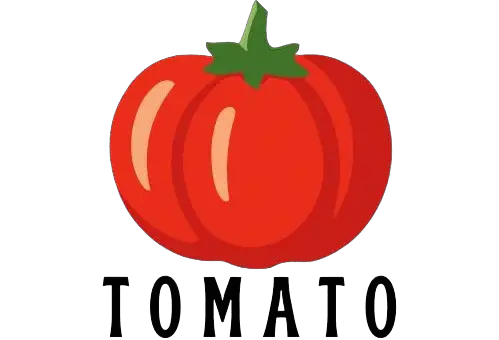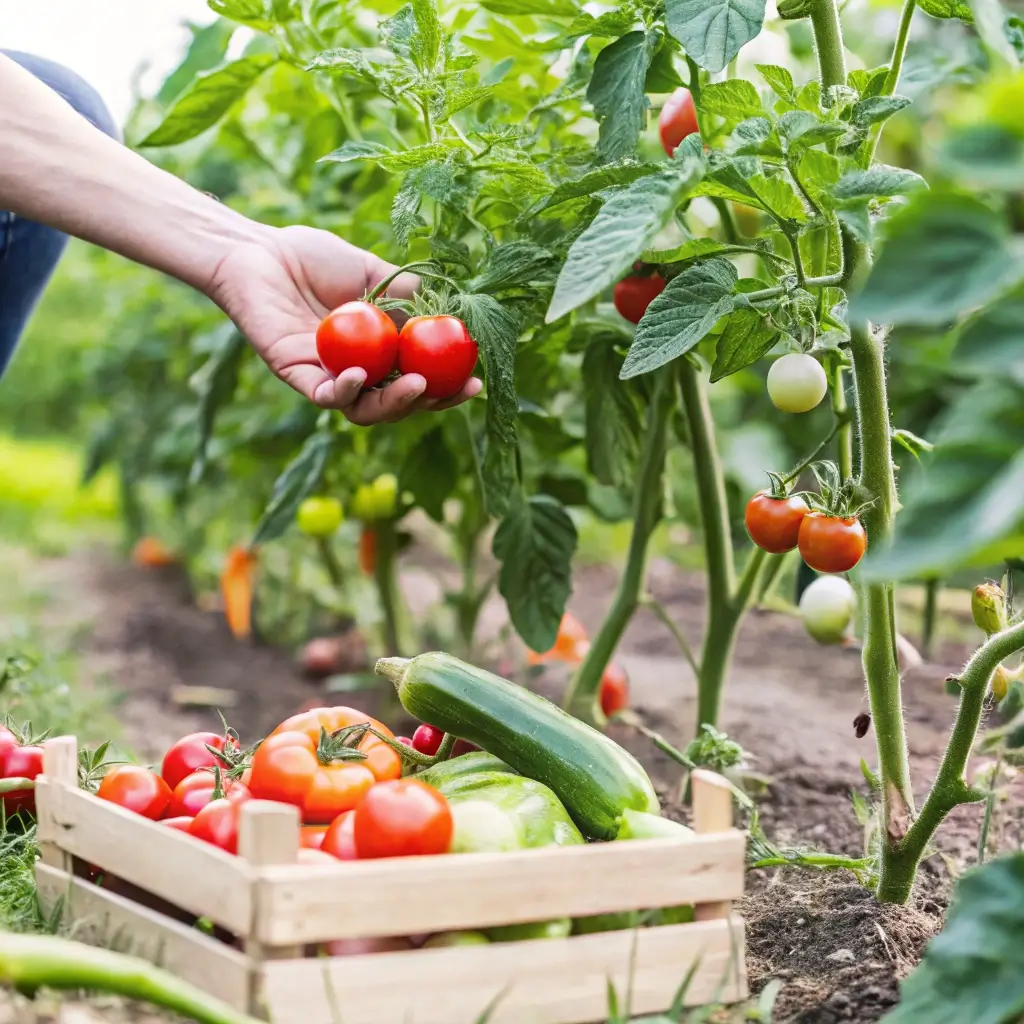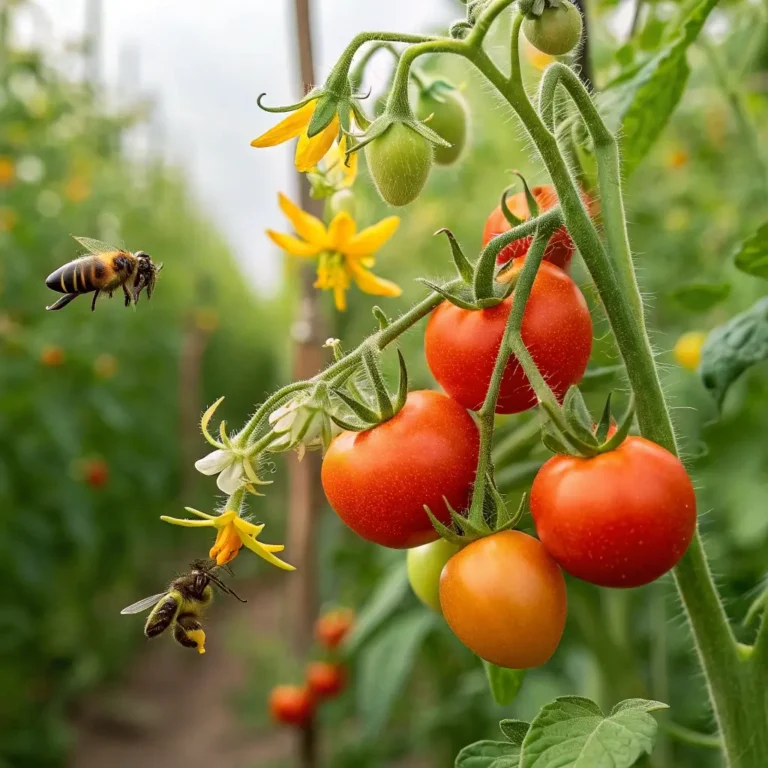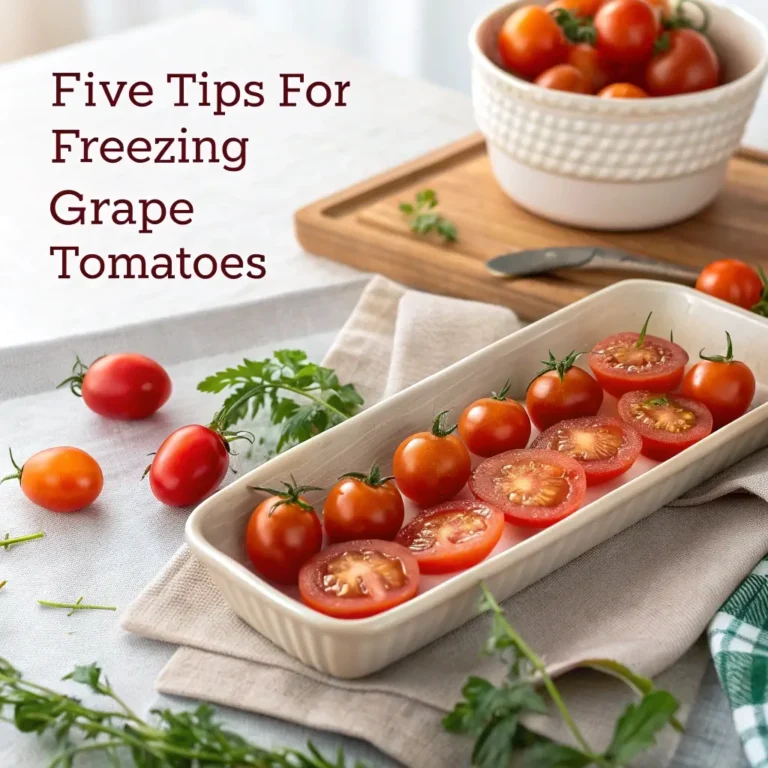When’s the Best Time to Pick Tomatoes? 5 Tips for Perfect Harvest
Table of Contents
Introduction
Did you know that 78% of home gardeners harvest their tomatoes at the wrong time, significantly impacting both flavor and nutrition? That surprising statistic reveals why so many homegrown tomatoes fall short of their potential. When’s the best time to pick tomatoes? This question plagues both novice and experienced gardeners alike, especially since timing can mean the difference between bland, underdeveloped fruits and the sweet, juicy tomatoes that make summer gardening worthwhile. Understanding the perfect moment to harvest doesn’t just improve taste—studies show properly harvested tomatoes contain up to 40% more lycopene and vitamin C than their prematurely picked counterparts.
The Ripening Process
Understanding Tomato Maturation
Tomatoes undergo distinct phases of ripening, transitioning from green to fully colored fruits. This process involves both physical and chemical changes that directly affect flavor, texture, and nutritional value. The maturation timeline typically spans 20-30 days from when fruits first form, though this varies by variety.
- Green Stage: Firm fruits with high acidity and minimal sweetness
- Breaker Stage: First hints of color (usually yellow) appear at the blossom end
- Turning Stage: 10-30% color change occurs
- Pink Stage: 30-60% color development
- Light Red Stage: 60-90% color change
- Fully Ripe Stage: Complete color development with optimal flavor
Time of Day Matters
Scientific research from agricultural extension programs indicates that harvesting tomatoes in the morning after the dew has dried but before the midday heat provides optimal results. During this window (typically between 8-10 am), tomatoes maintain their firmness while containing peak levels of flavor compounds that develop overnight. Morning-harvested tomatoes also stay fresh up to 3 days longer than those picked in afternoon heat.
5 Essential Tips for Perfect Tomato Harvesting
Tip 1: The Color Test
The most reliable indicator of ripeness is color development specific to your tomato variety. Standard red tomatoes should display deep, uniform coloration with no green patches, while heirloom varieties may show characteristic color patterns:
- Cherry tomatoes: Bright, glossy red, yellow, or orange (variety dependent)
- Roma tomatoes: Deep red with slight give when gently squeezed
- Beefsteak tomatoes: Rich red color extending to stem area
- Yellow/orange varieties: Golden color with slight softening
For specialty varieties like Green Zebras or Black Krims, research their specific ripeness indicators, as they won’t follow traditional color patterns.
Tip 2: The Gentle Squeeze Test
When gently pressed, ripe tomatoes should yield slightly to pressure without feeling soft or mushy. This technique requires practice—apply just enough pressure to feel resilience without damaging the fruit. Data from commercial growers indicates that fruits with the perfect firmness contain optimal sugar-to-acid ratios, resulting in superior flavor profiles.
Tip 3: The Ease of Removal Method
A perfectly ripe tomato detaches from its stem with minimal resistance. To test this, hold the fruit in your palm and gently twist or lift upward. If it separates easily, it’s ready for harvest. For cluster tomatoes, individual fruits should detach without disturbing others on the vine.
Tip 4: Weather Considerations
Strategically time your harvest based on weather patterns. Recent agricultural studies recommend harvesting:
- Before heavy rainstorms (prevents splitting)
- Before extreme heat waves (prevents sunscald)
- Before first frost (temperatures below 50°F halt ripening processes)
During periods of high humidity, harvest slightly earlier as excess moisture can contribute to fungal issues and cracking in fully ripe fruits.
Tip 5: Staggered Harvesting Approach
Instead of waiting for all tomatoes to ripen simultaneously, implement a staggered harvesting schedule. Research from master gardener programs shows that removing ripe fruits prompts plants to direct energy toward developing remaining tomatoes, increasing overall yield by up to 25%. Establish a consistent 2-3 day harvesting routine during peak season.
Harvesting for Different Purposes
Your intended use should influence harvesting decisions:
- Immediate Consumption: Harvest at peak ripeness when fruits have developed full color and aroma
- Cooking/Canning: Pick when fully colored but still firm (helps maintain shape during processing)
- Seed Saving: Allow fruits to ripen fully on the vine beyond typical eating stage
- Extended Storage: Harvest at mature green or breaker stage for maximum shelf life
What To Do With Unripe Tomatoes
As the growing season ends, you’ll likely have green tomatoes remaining on plants. Options include:
- Bring indoors to ripen in a paper bag with a ripe banana (ethylene gas accelerates ripening)
- Harvest for green tomato recipes (fried green tomatoes, chutney, relish)
- Root prune plants (cut some roots with a shovel) to stress them into ripening remaining fruits
Storing Your Harvest
Properly harvested tomatoes maintain optimal flavor when stored correctly:
- Never refrigerate ripe tomatoes—temperatures below 55°F destroy flavor compounds
- Store stem-side down at room temperature out of direct sunlight
- Separate tomatoes at different ripeness stages to prevent accelerated ripening
- For extended storage of partially ripe tomatoes, maintain 55-70°F temperatures in a well-ventilated area
Conclusion
The best time to pick tomatoes ultimately depends on reaching the perfect balance between color development, firmness, and ease of removal from the vine. By implementing these five expert harvesting tips and understanding the subtle signs of ripeness, you’ll maximize both flavor and nutritional content from your tomato plants. Remember that each variety follows slightly different timelines, so observe your specific plants closely. The difference between a good tomato and an exceptional one often comes down to harvesting at precisely the right moment.
FAQs
Q: Can I ripen tomatoes that I’ve picked too early?
A: Yes, place underripe tomatoes in a paper bag with a ripe banana or apple. The ethylene gas released will accelerate ripening, though flavor won’t fully match vine-ripened fruits.
Q: Why are my homegrown tomatoes splitting before I can harvest them?
A: Splitting typically occurs after heavy rain when plants absorb water rapidly. Harvest fruits at the first sign of color change during rainy periods and implement consistent watering practices.
Q: Should I leave tomatoes on the vine as long as possible?
A: Not necessarily. Once tomatoes reach full color, additional vine time doesn’t significantly improve flavor but increases risk of pest damage, cracking, and sunscald.
Q: How can I tell when unusual colored tomato varieties (purple, black, striped) are ripe?
A: Focus on firmness and the ease-of-removal test rather than color alone. Research your specific variety’s characteristics, as colors vary dramatically in heirloom types.
Q: Will tomatoes ripen after the first frost?
A: Tomatoes damaged by frost won’t continue ripening properly. When frost threatens, harvest all mature fruits regardless of color and ripen indoors.







